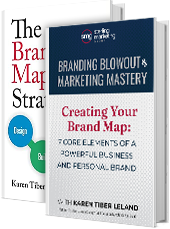Summary:
The MoMA exhibit on Robert Rauschenberg offers three marketing insights:
- Modernize technology: MoMA’s use of sleek iPod guides captures visitor data and enhances experiences, showing the power of updating old tech.
- Name strategically: Rauschenberg’s renaming of his work as “Combines” highlights the importance of clear branding for relatability.
- Embrace collaboration: Rauschenberg’s innovative collaboration with Merce Cunningham demonstrates the value of diverse partnerships for creative outcomes.
Earlier this week I went to a preview of the MoMA NYC exhibit Robert Rauschenberg: Among Friends.
This extensive retrospective of the artist’s work–the first in the twenty-first century–is a celebration of his collaborations with other artists, dancers, and musicians. The exhibit, which opens Saturday, May 20th, 2017, presents 250 works from six decades of his career, and got my branding brain and marketing mind all aflutter with inspiration. Here are three simple marketing ideas worth mentioning:
1. Put a new twist on old technology
The creative approach: Upon arriving I was given the pro forma option of using a self-directed audio tour for the exhibit. But instead of the clunky CD player of the past, I was presented with the new MoMA Audio+ mobile guide, a sleek iPod device (replete with touch screen controls) that fit lightly into the palm of my hand.

The most unique thing about the player was that it went beyond the functional “press one to play the patter about the art piece” feature and instead created an interactive experience from the start with such features as emailing yourself links which recap your visit for the day and copies of audio descriptions for selected pieces in the exhibit.
The branding and marketing takeaway: Offering these features allows the museum to instantly capture not only your contact information–but scads of information about your preferences and tastes. In fact, they immediately send you an email thanking you for visiting.
Ask yourself: In what creative ways could we use our existing technology to enhance and expand the brand beyond the initial customer experience?
2. Create a new name and solve the problem
The creative approach: In 1953 Rauschenberg created a series of paintings known as the Red Paintings. The pieces incorporated elements of paper bags, fabric, metal, wood, mirrors, lights, and more. The artist noticed that rather than looking at the piece, viewers would stand in front of the work and argue about whether it was a painting or a sculpture. To solve the situation, Rauschenberg began calling the work Combines. “The next time someone asked me,” said Rauschenberg, “I said ‘Combine.’ After that no one asked.”
The branding and marketing takeaway: What you call things matters. I often work with companies who have struggled to come up with a name (for a company, team, product, etc.) that is both catchy and evokes meaning. While naming can be a complex process, sometimes a literal take on the topic (as with Rauschenberg’s Red series) does the trick.
Ask yourself: Is there something we need to rename that would make it easier to understand and more relatable?
3. Don’t get stuck in the old, instead let collaboration create something new
The creative approach: One of the most unusual collaborations in the MoMA exhibit is Minutiae –a collaboration between the artist and Merce Cunningham, an icon of American modern dance. Cunningham requested that Rauschenberg create a work to go with a performance he had choreographed–but didn’t want the piece to function only as a backdrop but rather be integrated into something the dancers could use. The result was Rauschenberg’s first free-standing “Combine,” an artwork that stood on the floor–rather than being hung–and that the dancers could move in and out of.
The branding and marketing takeaway: It’s easy to get into the habit of doing things the way they have always been done. Testing out creative collaborations–especially with those who have a different background, perspective, or talent than ours–can lead to out-of-the-box ideas, solutions, and creations. Rauschenberg himself was keenly aware of this dynamic.
Rauschenberg is perhaps most famous for his iconic silkscreens featuring a series of 150 images in various combinations for which he won the grand prize at the Venice Biennale in 1964. His response to this honor was to call a friend and request that he destroy the screens so he would not be tempted to repeat himself.
Ask yourself: Is there an unexpected partner we could collaborate with on a project, product, or process who could bring fresh ideas and a new way of looking at how we usually do things?
Art can be a powerful force of creative inspiration. According to art historian Jonathan Fineberg, author of Modern Art at the Border of Mind and Brain.
In a 2015 interview with NPR, Fineberg said that seeing “is inherently a very creative act, and you’re constantly revising what you think you see… Less than 20 percent of what we see actually comes from the eye,” he said. “Most of it comes from processing in the brain and the visual cortex, and that comes from memories, reason, emotion, and all kinds of other things.” His conclusion? Looking at visual images can supercharge your brain’s creativity.
So the next time you feel like you need a little mojo to get your creative juices flowing, take a break and peruse the works at your local museum. You just might find that there’s a little bit of Robert Rauschenberg inside of you, waiting to get out.
This article originally appeared on Inc.com.
